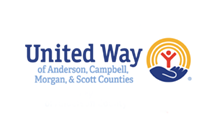United Ways of Tennessee launched a statewide data project, which provides a comprehensive measure of financial hardship across our state: ALICE. ALICE stands for Asset Limited, Income Constrained, Employed.
The ALICE report tells the story of our community members who are working but are still struggling to survive through a standardized methodology that assesses the cost of living in every county. ALICE is our neighbors, friends, and family who may earn more than the official Federal Poverty Level, but still cannot afford the basic necessities for their family.
ALICE lives in every county in Tennessee. Equipped with this data, the United Way of Anderson County will advocate and innovate to highlight the issues faced by ALICE households, and to generate solutions which help them on their path to financial stability.
In Anderson County, 26% of households struggle to afford the basic necessities of housing, child care, food, health care, and transportation.
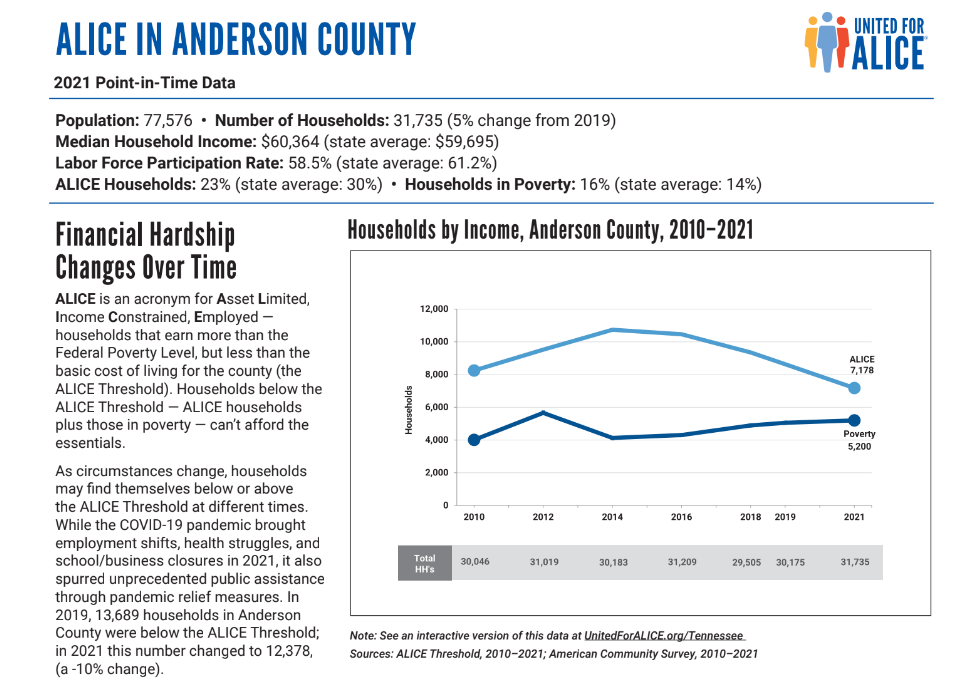

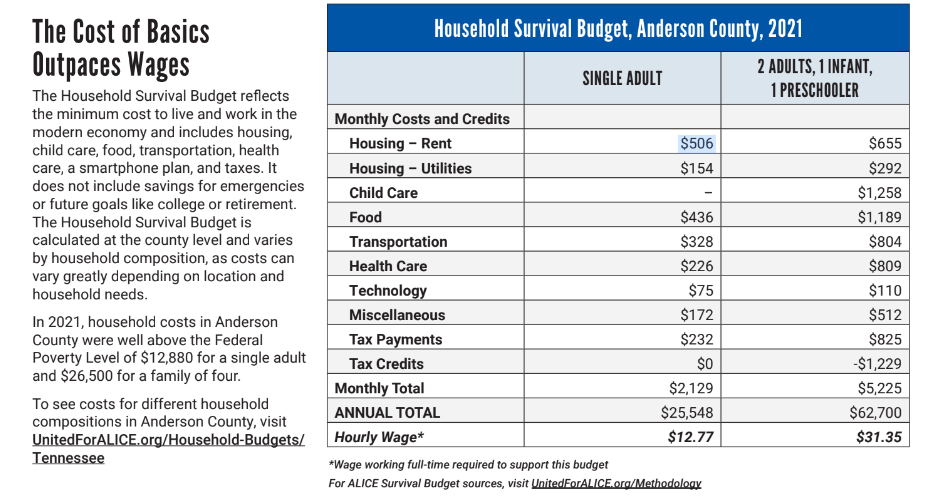
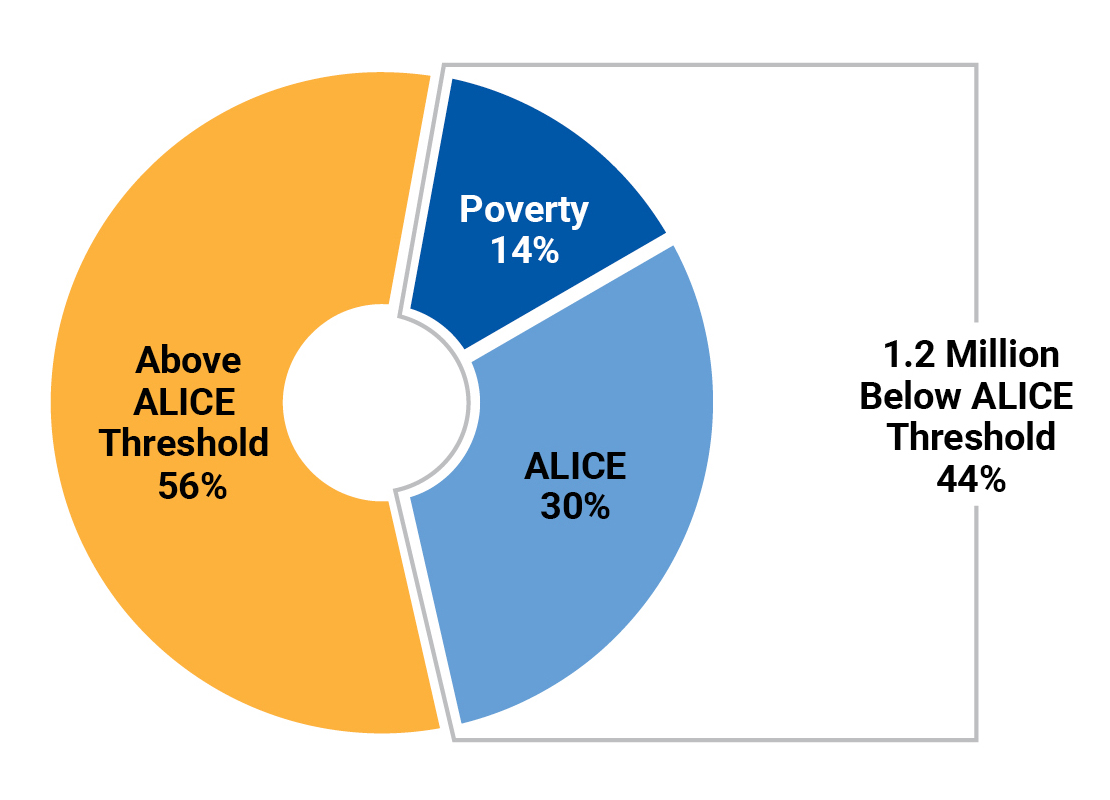
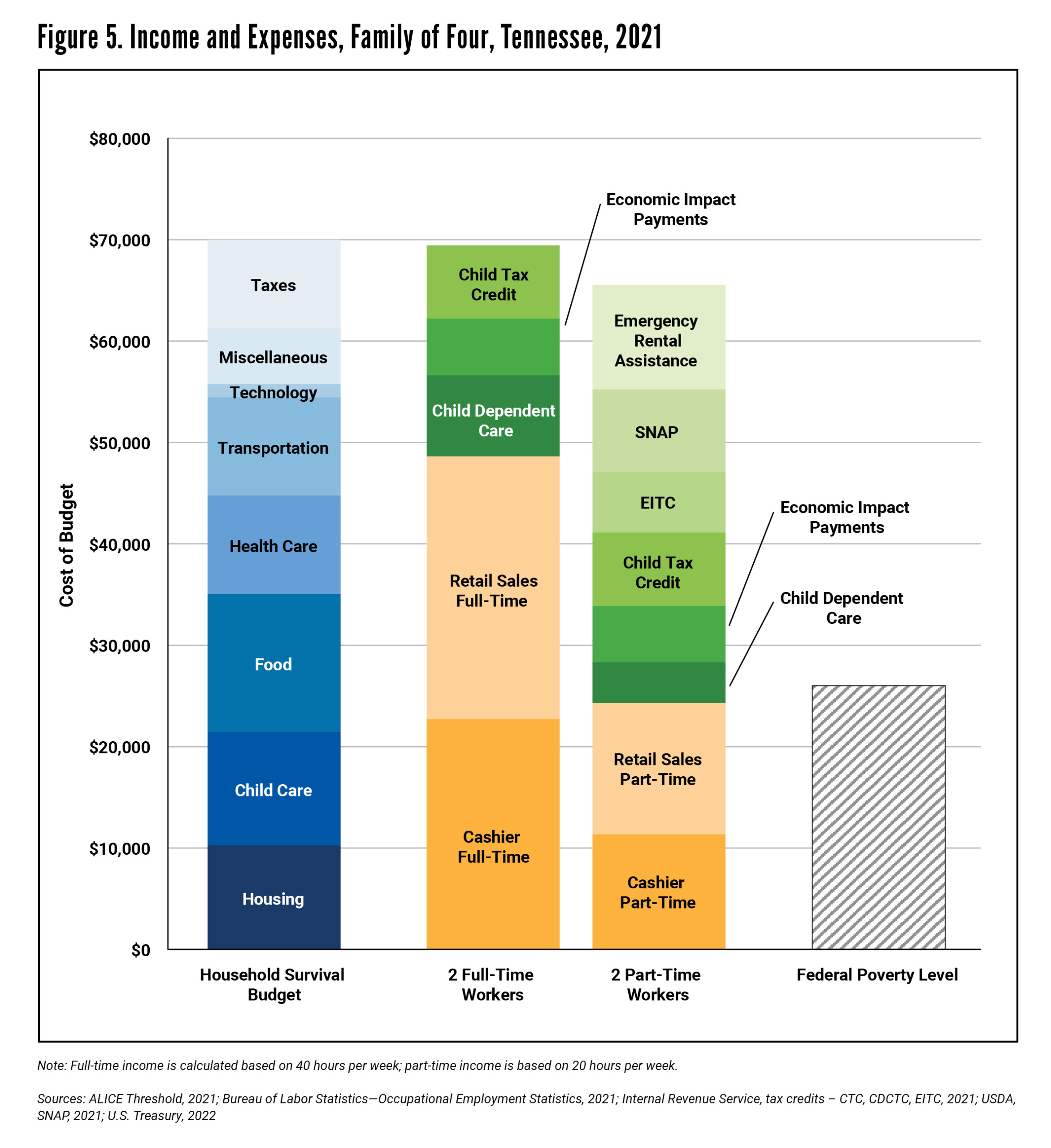
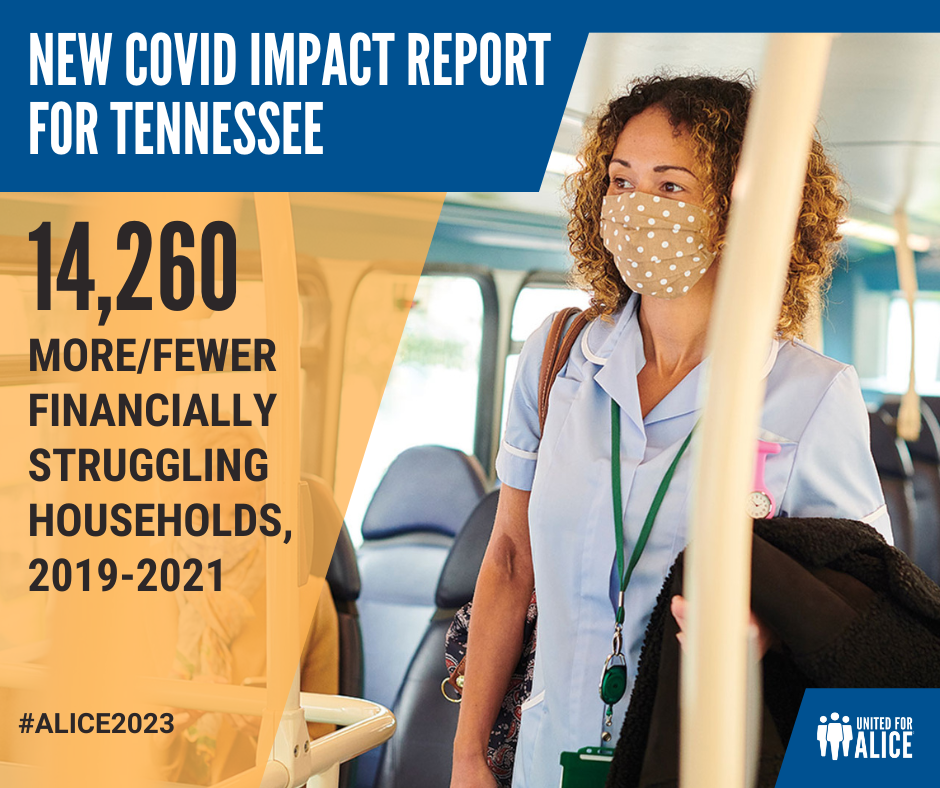
Economic forces worked with and against each other throughout the pandemic. These included:
⬇️ Job disruption
⬆️ Wage increases
⬇️ Inflation
⬆️ Pandemic assistance
🔀 Migration
The result? From 2019 through 2021, Tennessee saw a 1% decrease in the total number of households in poverty and ALICE households – earning above the Federal Poverty Level but not nearly enough to afford basics – from 1,211,160 to 1,196,900.
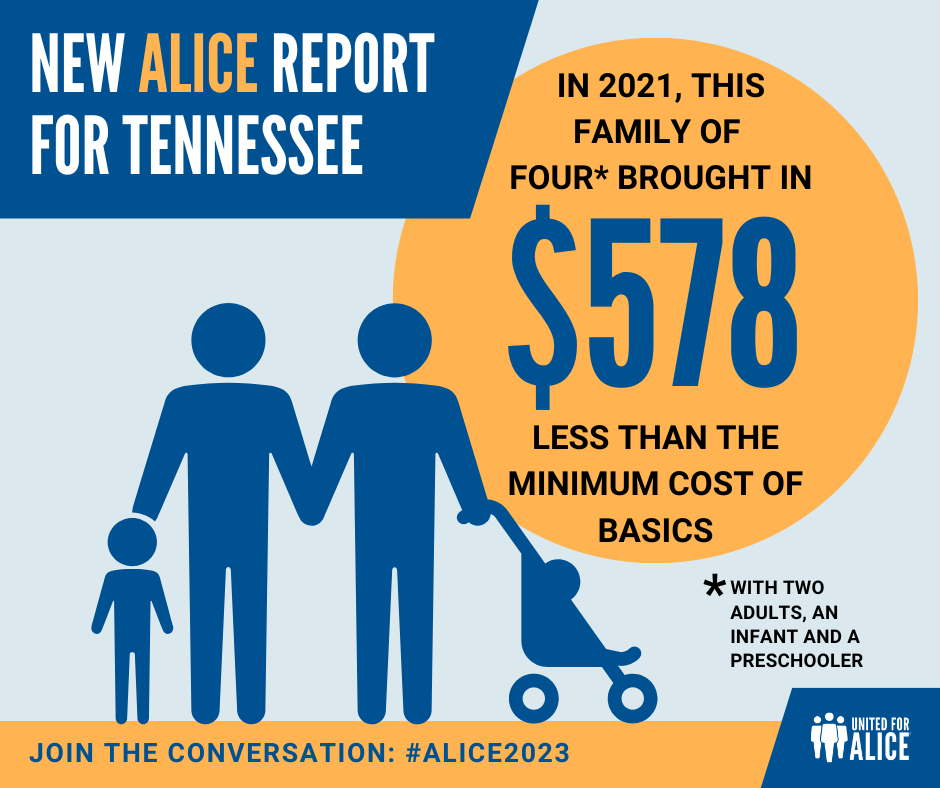
Tax credits and other pandemic supports – for which nearly all ALICE households were eligible – mitigated the pandemic’s negative financial impacts. Yet even with these temporary supports, many ALICE households did not reach financial stability.
In 2021, for a family with two kids and two adults in Tennessee, the Household Survival Budget – which calculates the minimum needed to afford necessities – was $70,000. With two full-time workers in two of Tennessee’s most common jobs, and multiple pandemic supports, that family’s income still fell short of the Budget by $578.
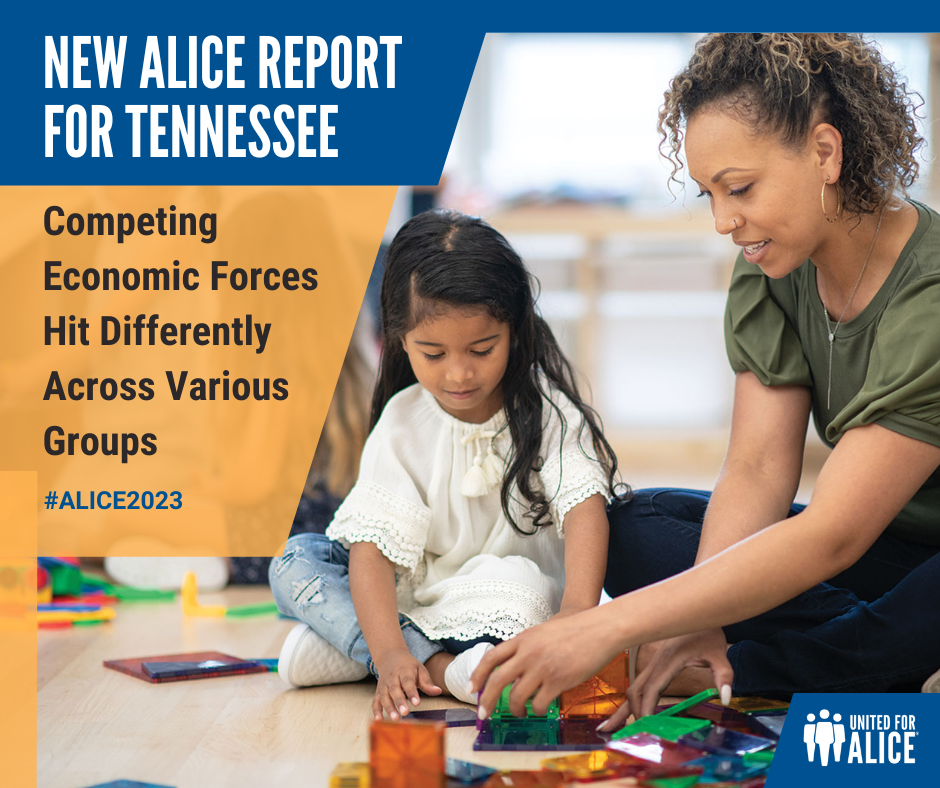
Throughout the pandemic, competing economic forces hit differently across demographic groups. In many cases, the pandemic exposed and widened gaps in rates of hardship by race/ethnicity, age, and household composition.
In Tennessee in 2021, Hispanics were more likely to be ALICE or in poverty.
Whites were more likely to be financially stable.
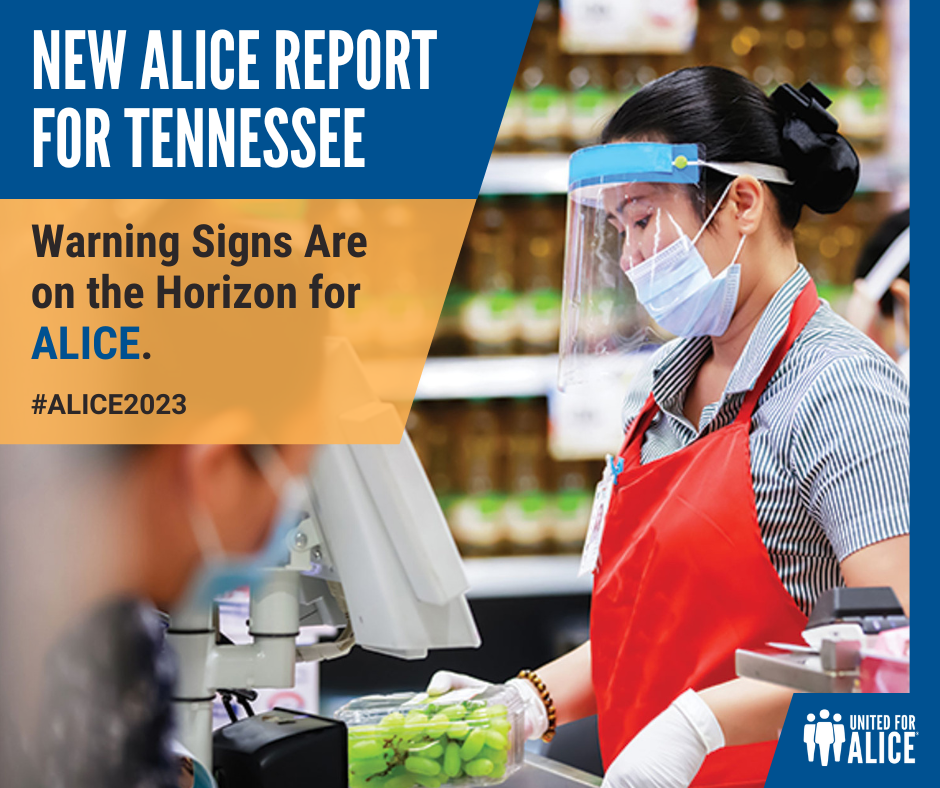
Overall, economic forces during the pandemic helped cushion its negative financial impact, as things could have been worse for many struggling families. But with inflation on the rise and pandemic supports waning, how will ALICE fare in the years ahead? There are warning signs on the horizon that suggest that ALICE households may already be losing ground. These include:
⚠️ Food Insufficiency
⚠️ Learning Loss
⚠️ Struggling to Pay Bills
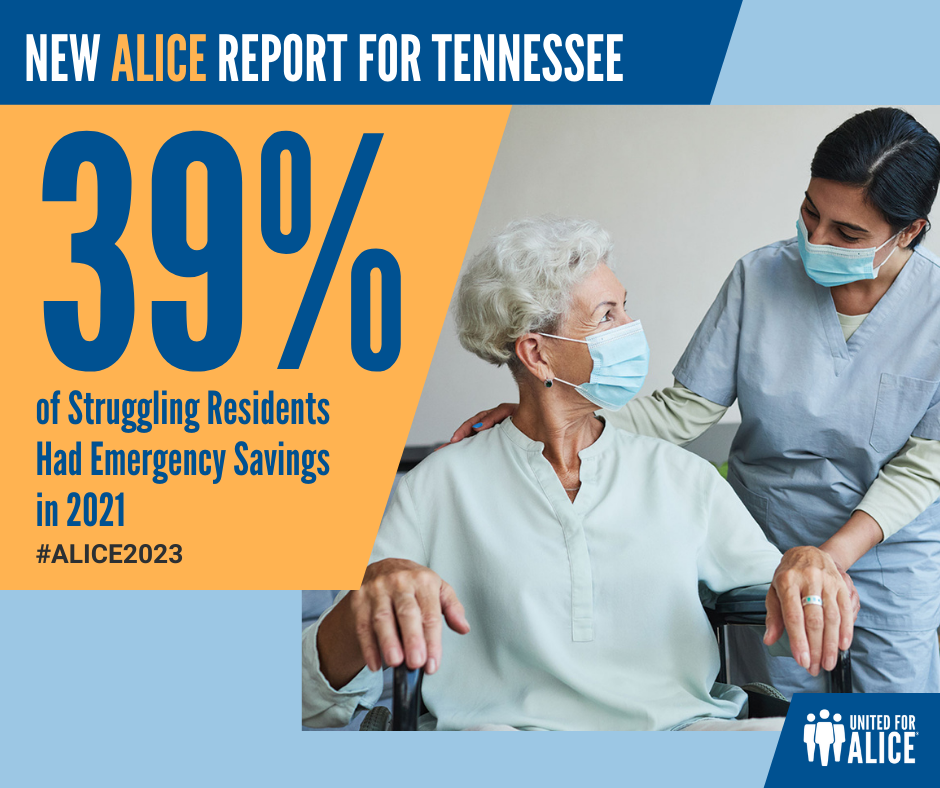
As the pandemic has shown, ALICE workers are the engine that keeps our economy running in times of crisis and beyond. Yet according to the SHED survey, only 39% of respondents from struggling households in Tennessee had money saved up for a crisis as of November 2021. This leaves a large percentage vulnerable to future crises, especially given the warning signs that are already starting to appear.
As we act on the findings in our new #UnitedForALICE Report, “ALICE in the Crosscurrents,” we must remember that Tennessee’s economy depends on the financial stability of all its residents – including and especially ALICE.
